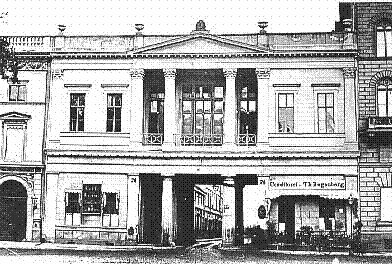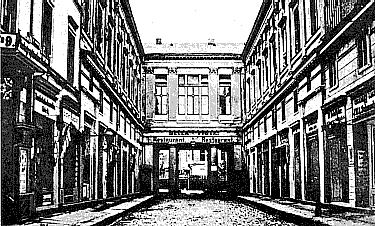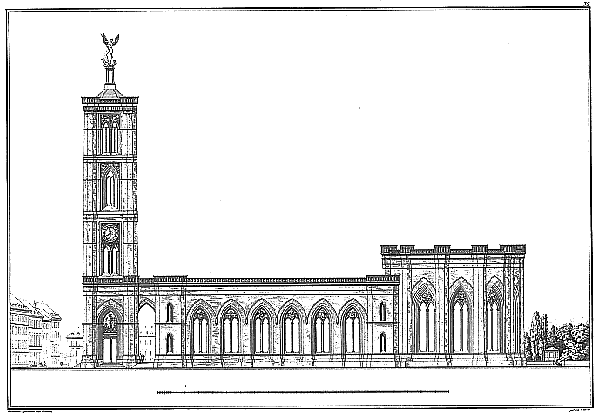George Austin
architect; b. 1787; d. 1848.
The Cathedral of Canterbury was allowed to decay until about 1819. Only mechanics were employed to care for it, and important parts of the building were in ruin. George Austin, a resident of Canterbury, urged the necessity of intelligent care, and was placed in charge of the monument. He restored the entire building. His restoration of the southeastern transept and northwestern tower were remarkable feats of engineering.
Jean-Jacques Champollion (Champollion-Figeac)
architect; b. October 5, 1778 (at Figeac, Lot, France) ; d. May 9, 1867.
Champollion-Figeac was a brother of Jean-François Champollion, the Egyptologist. He was custodian of the manuscripts of the Bibliothèque Nationale, professor at the École des Chartes, Paris, and bibliothécaire of the palace of Fontainebleau. He wrote the text to Pfnor's Monographie du Palais de Fontainebleau (Paris, 1863, 3 vols.), and numerous unimportant works on archæology.
Petrus Jacobus Goetghebuer
architect and engraver; b. February 28, 1788.
He was a pupil of P. J. de Broe and at the Royal Academy of Ghent. Goetghebuer published Choix des monuments, édifices et maisons les plus remarquables du royaume des Pays-Bas. He built the Hôtel des Postes in the Wapenplaats in Ghent and other important buildings. His brother François Joseph was also an architect of note.
William Inwood
architect; b. about 1771; d. 1843.
His best-known work is S. Paneras New Church, London, built between 1819 and 1822. He was especially assisted by his sons Henry William Tables for the Purchasing of Estates . . . and for the Renewal of Leases held under Corporate Bodies.
| |
Henry William Inwood
architect; b. May 22, 1794; d. 1843.
The eldest son of William Inwood (above). In 1819 he visited Greece, and returning to England, assisted his father in the construction of S. Paneras New Church, London. Inwood published The Erechtheion at Athens, Fragments of Athenian Architecture, etc. (London, folio, 1827; republished by A. F. Quast, Potsdam, 1843.)
Paul Marie Letarouilly
architect; b. October 8, 1795; d. October 27, 1855.
Letarouilly came to Paris in 1814, entered the atelier of Charles Percier in 1816, and in 1819 joined the first class formed at the École des Beaux Arts. In 1819, also, he served as inspector of the works at the Odéon theatre, Paris. After a prolonged sojourn in Italy he returned to Paris and was appointed inspector of constructions at the Ministère des Finances under Hippolyte Destailleur. He is best known by his two great works on Rome, Edifices de Rome Moderne (text one vol. 4to., 1868, plates three vols, large folio, Paris, 1868-1874), and Le Vatican et la basilique de Saint Pierre. At the time of his death only the plates of this work were ready for publication. These were put in order by A. Simil and published in 1882, Paris, three vols, large folio. No text was ever issued.
| |
Charles Pierre Joseph Normand
architect; b. November 25, 1765 (at Goyeucourt, Somme, France); d. February 13, 1840.
In 1791 he won the Premier Grand Prix de Rome in architecture, which entitled him to a stay of five years in Italy. This course of study being interrupted by the French Revolution, he devoted himself to the art of architectural engraving, and produced an enormous number of plates. He was employed upon nearly all the great illustrated architectural books of his time. Normand was also interested in the production of practical works for the assistance of architects and mechanics employed in architecture, such as Nouveau parallele des ordres d'Architecture, (Paris 1819, folio); La Vignole des ouvriers (Paris, 1835, 4to); etc.
John Papworth (after 1815, John Buonarroti)
architect; b. January 24, 1775; d. June 16, 1847.
He was apprenticed to Thomas Wapshott, and had some instruction from Sir William Chambers. He acquired intimate practical knowledge of the details of construction, and designed a large number of buildings in London, and many country residences. He was much employed as a landscape gardener, and wrote many practical works on architecture.
| |
 
Karl Friedrich Schinkel, Neue Wilhelmstraße (Berlin: 1819), p.SAE.

Karl Friedrich Schinkel, St. Gertrauds (Berlin: 1819), p.SAE.
|